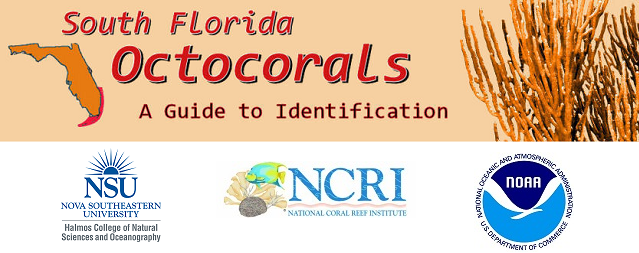Preview

Family
Gorgoniidae
Common Name(s)
Slimy sea plume
Colony Form
Plumose, pinnate, to 1.5 m tall.
Axis
Cylindrical
Branches
Pinnules long, flexible, regularly-spaced, flat or triangular in cross section, <5 mm across, usually in pairs on opposite sides of main branch.
Apertures
Flush but can appear bulbous; restricted to row along flattened sides of pinnules. Polyps contract slowly and often remain expanded when preserved.
Mucus
Copious; colonies very slimy.
Color
Purple to beige tan; dries purple, brown, beige, tan, pale yellow.
Sclerites
Polyp armature: small rods with rounded knobs; no flat rods. Body wall: scaphoids (curved sclerites) strongly curved with sharp ends often recurved outward, and with convex profile finely spiny; spindles acute, large and ornately sculptured, to 0.4 mm long.
Habitat
Shallow hard bottoms to deep reefs in clear water; 1-50 m.
Distribution
Bermuda, South Florida, Bahamas, Antilles.
Similar Species
Date Taken
April 2016



Notes
Williams and Chen (2012) transferred all Western Atlantic species ofPseudopterogorgia to the genus Antillogorgia. Although Antillogorgia americana produces a number of secondary metabolites that appear to have anti-predator functions (Epifanio et al. 2007), it still may be preyed upon by the flamingo tongue gastropod, Cyphoma gibbosum, which preferentially consumes axial tissues near the base of colonies (Harvell & Fenical 1989). Bayer (1961) noted that bleaching for sclerite examination breaks the tissue down very slowly and releases far more zooxanthellae than in either A. acerosa or A. rigida.